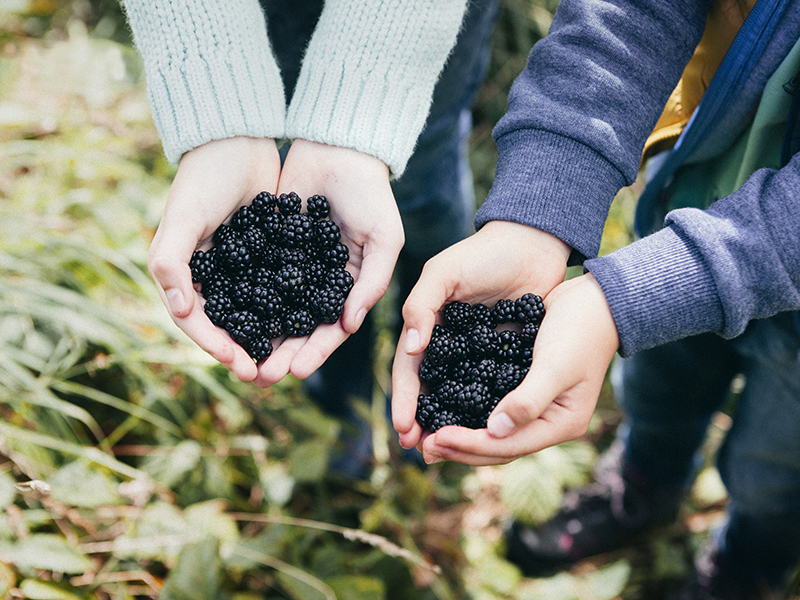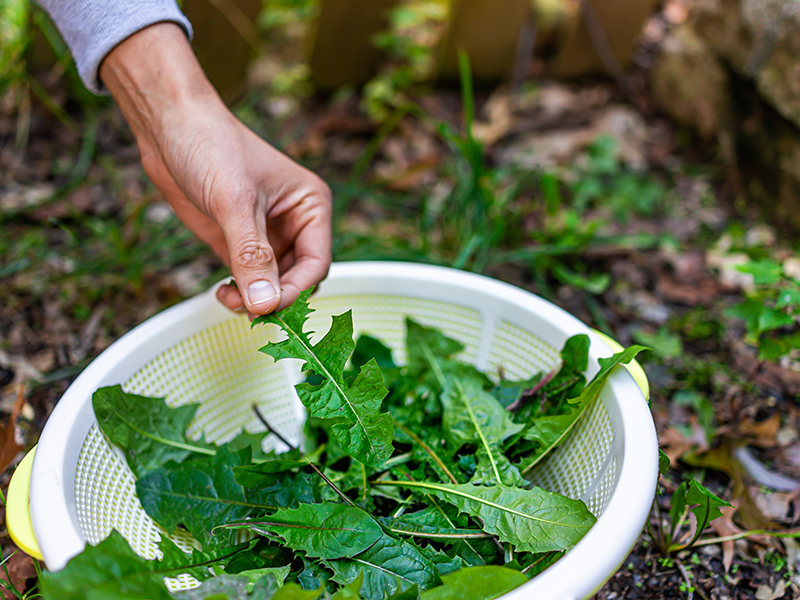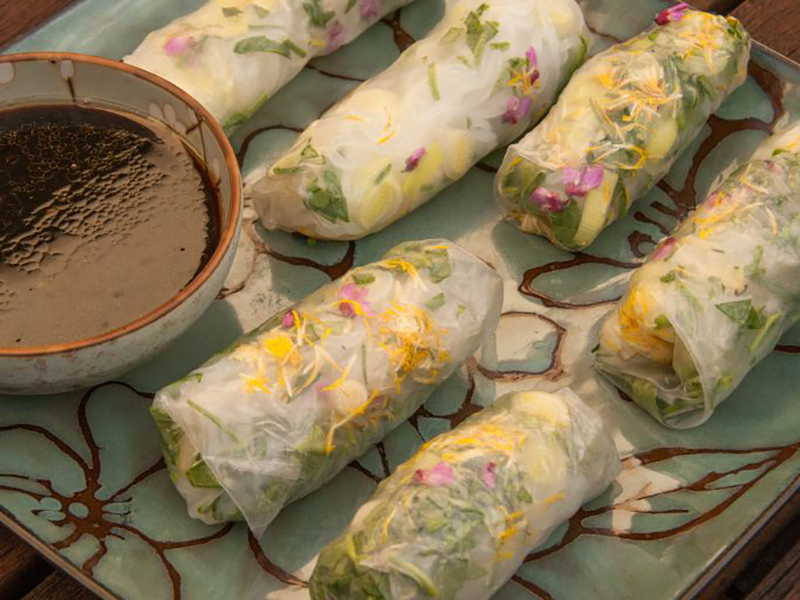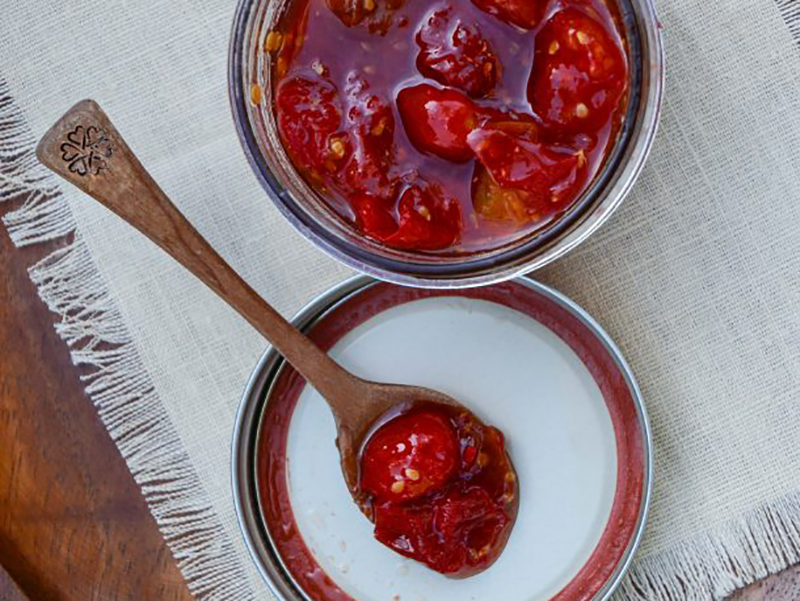Mindful Food: How to Go Foraging for Plants in Your Backyard
Foraging can form a key part of eating mindfully, say these experts—here’s how to begin at home and the foods to look for this fall
Foraging can form a key part of eating mindfully, say these experts—here’s how to begin at home and the foods to look for this fall
The current health crisis has placed a renewed focus on nutritional well-being and where our food comes from. “Re-engaging with how our food is raised, harvested, transported and then sold to us can be eye-opening,” says Lynne Curry, an Oregon-based professional food writer and mindful-eating advocate. “Now is our opportunity to reclaim what we value and to interact with nature in the most meaningful way possible—from seed saving to foraging for plants or buying locally raised meats.”
Ellen Zachos, a passionate forager-cook, who writes books and runs inspiring online courses from her New Mexico home, agrees. For her, foraging is part and parcel of eating mindfully: “It makes you feel like you’re making a conscious decision to support your body. You know that those foods haven’t been sprayed by pesticides or herbicides and they don’t have a carbon footprint.”

But, when it comes to finding your own food, where do you begin? Thankfully, Zachos says there’s no need to hike up a mountain or lose yourself in a forest. Instead, she recommends foraging safely and successfully in your own backyard—“starting in your own garden is a great idea because you know what’s growing there.”
Foraging in your garden can be as simple as starting with the wild edibles that grow there informally, just as you’d find them in nature. “Edible weeds, like chickweed, or edible flowers, such as violets, which sneak into your garden definitely count as foraging,” says Curry. “I also love the nettles that show up on the edge of my garden bed, and the potato plants that sprout from my compost.”

If you’d prefer a more structured approach, you can contain leafy plants in a French-style potager, and train trees and fruit bushes into smart espaliers across a wall. But, whatever your chosen aesthetic, be adventurous. When planting a new bush or selecting a new tree, choose an edible version and, gradually, your backyard will become a flavorful place of plenty.
Zachos encourages any would-be forager to be imaginative. “It’s wonderfully creative,” she laughs. “If you are someone who enjoys cooking and who loves unusual flavors, foraging is perfect.
“But the only way to experience those flavors is to walk outside and pick the cornelian cherries, and taste the Oregon grapes. Then start with simple substitutions—just swap a familiar ingredient for something you’ve foraged.” Case in point: her delicate spring rolls, where more traditional vegetables have been replaced with dandelion petals and chopped cattail shoots.

She also uses wild greens in many recipes, including egg-based tarts and soufflés. “Wild arugula is one of my favorites and dock is an especially generous plant. Plus, there’s often a second flush of fresh foliage at this time of year.”
Fall is a traditional season of harvest and plenty, so it’s also a fitting time to forage close to home. “Right now, I depend on the brightly colored stems of chard, tall lacinato kale, young spinach and apples,” says Curry. “There are wild mirabelle plums that I turn into soft-set jam and serve with cheese and crackers.”

Another of Zachos’ favourites in fall is spicebush, an edible plant native to the northern United States. “Spicebush berries taste wonderful, and are a great substitution for cinnamon and nutmeg. I also adore chokeberries, a tart, juicy fruit, rich in antioxidants, and flowering quince—the flavor and texture of the ripened fruit is very similar to traditional quince.”
And don’t forget the nuts that tumble from many ornamental garden trees right now—acorns, hazelnuts, hickory nuts, black walnuts, and sweet chestnuts. Plus, look out for wild squash and sunchoke, and hedgerow fruits like rosehips, beach plums, and blackberries. These jewel-bright berries preserve beautifully in jams, jellies, and cordials.
Or, if you’d prefer your foraged finds in drink form, Curry has just the trick. “I make fruit syrups from foraged berries, like the native chokecherry, which I turn into sodas for my kids,” she explains. “It also makes a great cocktail for the grown-ups.”

Zachos is a wild cocktail fan, too: “Crab apples are such a plentiful fruit right now, and are so useful. I made a bourbon cocktail with foraged crab apples and ginger beer recently. It was absolutely delicious.”
1. Beach plum (Prunus maritima): Use in jellies, pies, and flavored gin
2. Chokeberry (Aronia melanocarpa): Ideal for jellies, jams, and juices
3. Chokecherry (Prunus virginiana): Turn the fruits into jellies and syrups
4. Cornelian cherry (Cornus mas): Preserve in fruit jams or add to sweet pies
5. Crab apple (Malus): Turn into jelly or syrup
6. Curly or broad-leaved dock (Rumex): Remove the midrib and add to stir-fries, stews, and savory tarts
7. Flowering quince (Chaenomeles): Use in jellies and pastes, or poached in syrup
8. Spicebush (Lindera benzoin): Dehydrate and freeze the berries, then use instead of nutmeg and cinnamon
9. Sunchoke (Helianthus tuberosus): Roast or purée the roots, or add to soups and stews
10. Sweet chestnut (Castanea sativa): Boil or roast, then add to soups, pasta, or risotto
Zachos offers online foraging courses and seasonal recipes at backyardforager.com
You can find Curry’s recipes and more inspiration at lynnecurry.com
Banner image: Alamy